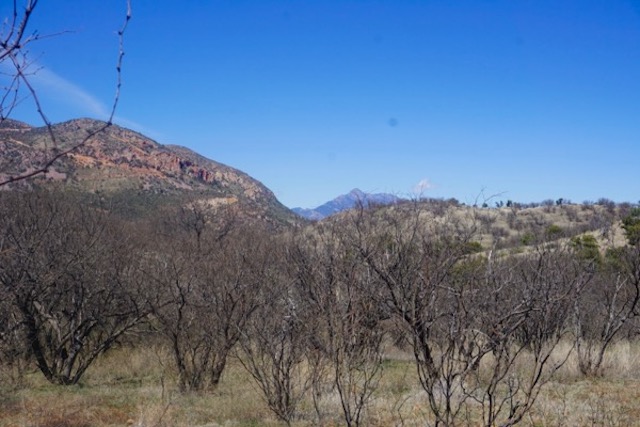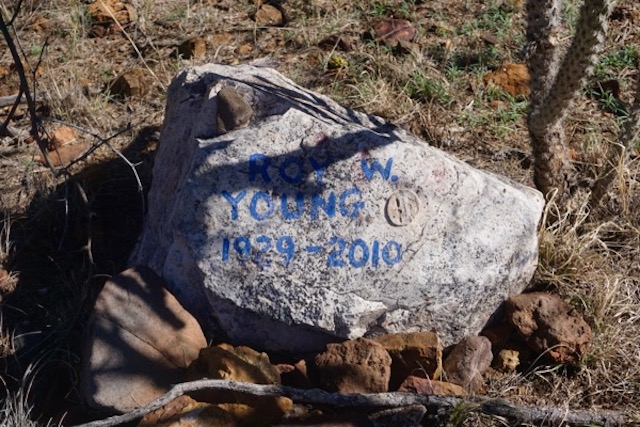NOTHING TO FEAR BUT FEAR ITSELF
So, first of all, let me assert my firm belief that the only thing we have to fear is…fear itself — nameless, unreasoning, unjustified terror which paralyzes needed efforts to convert retreat into advance….
…rulers of the exchange of mankind’s goods have failed through their own stubbornness and their own incompetence, have admitted their failure, and have abdicated. Practices of the unscrupulous money changers stand indicted in the court of public opinion, rejected by the hearts and minds of men.
The money changers have fled from their high seats in the temple of our civilization. We may now restore that temple to the ancient truths. The measure of the restoration lies in the extent to which we apply social values more noble than mere monetary profit.
Recognition of the falsity of material wealth as the standard of success goes hand in hand with the abandonment of the false belief that public office and high political position are to be valued only by the standards of pride of place and personal profit; and there must be an end to a conduct in banking and in business which too often has given to a sacred trust the likeness of callous and selfish wrongdoing.
Restoration calls, however, not for changes in ethics alone. This Nation asks for action, and action now. ~~~ FDR, First Inaugural Address (March 4, 1933)
[Updates below]
Hey XXXXX – just checking in – how’s it going in your neck of the woods?
I’m astounded by virtually everything I read lately, so I’m trying my best to stay away from the news, but it is almost impossible.
I read that Camus is on the best seller list. But the literature for the day is not Camus’ The Plague, but rather Arthur Miller’s The Crucible.
[Update: 3/23/20 – Edward Curtin finds Camus relevant at a very deep level, but notes the irrational panic dynamics at work that Miller illustrates. ~~~ end update]
It’s important to recall why Arthur Miller wrote that play (in his words):
McCarthy’s power to stir fears of creeping Communism was not entirely based on illusion, of course; the paranoid, real or pretended, always secretes its pearl around a grain of fact. From being our wartime ally, the Soviet Union rapidly became an expanding empire. In 1949, Mao Zedong took power in China. Western Europe also seemed ready to become Red—especially Italy, where the Communist Party was the largest outside Russia, and was growing. Capitalism, in the opinion of many, myself included, had nothing more to say, its final poisoned bloom having been Italian and German Fascism. McCarthy—brash and ill-mannered but to many authentic and true—boiled it all down to what anyone could understand: we had “lost China” and would soon lose Europe as well, because the State Department—staffed, of course, under Democratic Presidents—was full of treasonous pro-Soviet intellectuals. It was as simple as that. […]
The more I read into the Salem panic, the more it touched off corresponding images of common experiences in the fifties: the old friend of a blacklisted person crossing the street to avoid being seen talking to him; the overnight conversions of former leftists into born-again patriots; and so on. Apparently, certain processes are universal. […]
I am not sure what “The Crucible” is telling people now, but I know that its paranoid center is still pumping out the same darkly attractive warning that it did in the fifties. For some, the play seems to be about the dilemma of relying on the testimony of small children accusing adults of sexual abuse, something I’d not have dreamed of forty years ago. For others, it may simply be a fascination with the outbreak of paranoia that suffuses the play—the blind panic that, in our age, often seems to sit at the dim edges of consciousness. Certainly its political implications are the central issue for many people; the Salem interrogations turn out to be eerily exact models of those yet to come in Stalin’s Russia, Pinochet’s Chile, Mao’s China, and other regimes.
Nothing to fear, but fear itself, indeed! (in politics, economics, ecology, and public health)
The Coronavirus has exposed a badly broken, dysfunctional, privatized, and deregulated corporate “public health system”, what the NY Times today has cast not as an ideological and political construct, but as an essential feature of “the American tradition” of rugged individualism (“individual rights and limited federal power”), voluntary association, community response, and localism (“decentralized“), all of which they portray as far preferable to “centralized” “command and control” (surprised they didn’t find a way to insert “Soviet” or “Cuban”, given their Sanders smears):
“You can be too centralized, and a lot of the problems in China reflected an excessive use of the command-and-control model, in which everything had to run through Beijing for approval,” said Robert Dingwall, a British sociologist who has studied responses to pandemics.
But what that “American tradition” amounts to is: you’re on your own in a Neoliberal Nightmare:
Without clear guidance from the government, “it feels like we’ve been left on our own to decide what would be best,”
The obvious and blatant ideology in that NYT story is remarkable – propaganda beyond Orwell and Manufacturing Consent.
[Update: 3/23/20 – this author sees similar propaganda, manipulation, and opportunism. ~~~ end update]
And they put that totally political and ideological claim in the mouth of an academic (a British sociologist, no less) as if it were objective and rigorous. Of course, there was no mention of the fact that China was able to build hospitals in 10 days, test millions of people, and apparently contained the spread of the virus – while the US can’t even seem to test people in timely way with functioning tests methods.
And they write this story AFTER the Trump administration testified to Congress that they expect to rely primarily on “market forces” and the private sector. The best analysis of all this I’ve heard was by Jeff Sachs of Columbia, in a podcast interview of The Intercept.
In other frustrations, I sense that Bernie Sanders’ is going to fold tonight against Biden.
First, he telegraphed his “questions” days in advance, giving the Biden spinmeisters ample opportunity. But the larger problem is that Bernie seems unwilling to go on offense, against his “friend” Joe Biden. Ironic in how Bernie echoes Biden’s “friendships” with racist southern senators and vile Republicans, like Dick Cheney.
Because “electability” has gotten Biden this far, the debate tonight should be about Sanders criticizing Biden’s awful corporate warmongering Neoliberal record, not asking him softball questions about how to solve problems.
On top of all that, the debate is likely to be dominated by virus panic issues, which will divert from Biden’ record and vulnerabilities in terms of “electability”.
The chain of events and conspiracy – yes, there was a vast Neoliberal DNC, corporate, media and elites conspiracy to take down Bernie Sanders, beyond what we saw in 2016 – that have produced Biden’s lead is even more galling – and events keep breaking in his favor.
On a personal note, I left the Sonoran desert on Wednesday and am now in the mountains of Coronado National Forest, just outside a small town, Patagonia. It’s about 100 miles east of where I was in Ajo and 20 miles north of Nogales Mexico, elevation 4,300 feet, so it’s been pretty cold. Had 4 days of rain during travel, which has kept me on paved roads. Take a look:
I’m reconsidering my plans to come back east in light of the virus, and expect to stay as remote as possible in the mountains for the summer.
The poor dog is still lame – it breaks my heart to see him limp on 3 legs, given how incredibly strong and vibrant he was. But, it doesn’t seem like he’s in constant pain and I’m still giving him the painkillers and anti-inflammatory drugs the vet gave me.
On, literally, the bright side – the sun just emerged from a bank of clouds on a cold morning – all for now.
Hope you are doing OK.
ps – Want to avoid anti-science denialism, but I’m thinking that this “pandemic” is grossly exaggerated and the response driven by hysteria and opportunism.
In all the “data” and modeling about rates of transmission, incidence of cases, and deaths, a statistic I have NOT seen is how the number of Coronavirus deaths compare with the “background” mortality rate. If this virus is killing a lot of people, that would show up as excess mortality. Another key data I’ve not seen reported in the hospital admission numbers, including cases in ICU.
The absence of any mention of excess mortality may be premature, but I still find it odd given all the attention to excess mortality in Puerto Rico after Hurricane Maria, where “heart disease” was the number one cause of excess deaths:
Methods. We obtained monthly vital statistics data on all deaths from January 2008 through October 2017. We conducted a time-series analysis to estimate excess mortality in September and October 2017 overall and by age, sex, and cause of death.
[Update: 3/23/20 – this expert made the same point on the importance of “excess mortality”:
Thus the most important indicator for judging the danger of the disease is not the frequently reported number of positively-tested persons and deaths, but the number of persons actually and unexpectedly developing or dying from pneumonia (so-called excess mortality). ~~~ end update]
[Update: 4/6/20 – The NY Times finally covers the issues related to data on mortality, but the story did not explore the issues I’ve raised regarding excess mortality associated with COVID-19. ~~~ end update].
And on top of the gaps, all this “data” are highly uncertain, because we have so little hard data based on testing of the population (and reliance on China’s statistics may not be reliable).
[Update: 3/23/20 – this author makes the same points about uncertainty, lack of data, and the questionable reliability of data. ~~~ end update]
Of course precaution is wise, but hysteria is not. Time will tell. I hope I’m right.
pps- I just came across this grave – let’s hope it’s not a metaphor of things to come:
Wolfe
[Update 4/5/20 – Noam Chomsky agrees with my assessment about China and US failures to prevent, prepare, test and respond – and he also notes China’s gene sequencing:
“This coronavirus pandemic could have been prevented, the information was there to prevent it. In fact, it was well-known. In October 2019, just before the outbreak, there was a large-scale simulation in the United States – possible pandemic of this kind,” he said, referring to an exercise – titled Event 201 – hosted by the Johns Hopkins Center for Health Security in partnership with the World Economic Forum and the Bill & Melinda Gates Foundation.
“Nothing was done. The crisis was then made worse by the treachery of the political systems that didn’t pay attention to the information that they were aware of.
“On December 31, China informed the World Health Organization (WHO) of pneumonia-like symptoms with unknown origins. A week later, some Chinese scientists identified a coronavirus. Furthermore, they sequenced it and provided information to the world. By then, virologists and others who were bothering to read WHO reports knew that there was a coronavirus and knew that had to deal with it. Did they do anything? Well yes, some did.
“China, South Korea, Taiwan, Singapore began to do something, and they have sort of pretty much seemed to have contained at least the first surge of the crisis.”





